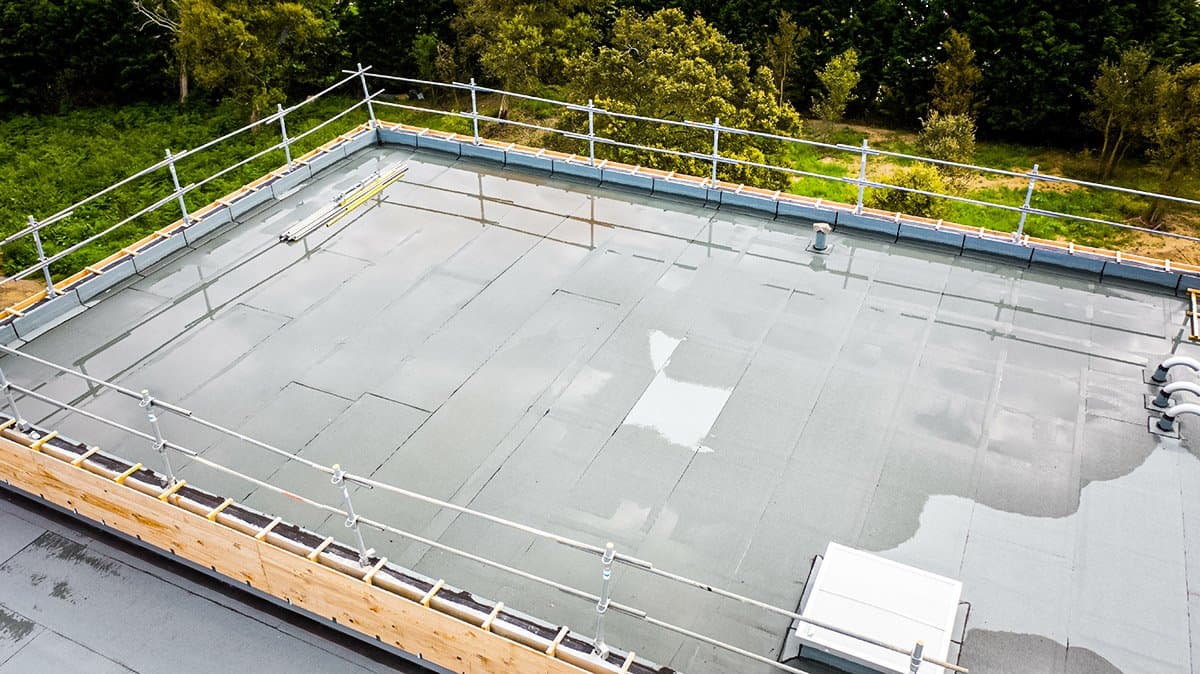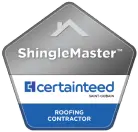Are you in the market for a new roof for your home or business? It’s important to understand the differences between flat and pitched roofs before making a decision. Flat roofs are typically less expensive to install and maintain, but they may not be as aesthetically pleasing as pitched roofs. Pitched roofs, on the other hand, offer a variety of design options and are known for their durability and weather resistance.
When choosing between flat and pitched roofs, cost is often a major consideration. Flat roofs are generally less expensive to install because they require fewer materials and less labor. However, they may not be as durable as pitched roofs and may require more maintenance over time. Pitched roofs, on the other hand, are more expensive to install initially, but they offer a longer lifespan and may require less maintenance in the long run. Ultimately, your decision will depend on your budget, the climate in your area, and your personal preferences for aesthetics and design.
Cost Considerations for Flat and Pitched Roofs
You’ll be shelling out more cash for a pitched roof, but the added visual appeal and potential for additional living space could make it worth the investment. Pitched roofs require more materials and a more complex installation process, driving up the cost. However, the higher cost of a pitched roof may be offset by its durability and energy efficiency. Pitched roofs are known for their ability to shed water and snow, which can help prevent roof damage and leaks. This can also reduce the need for repairs and maintenance over the years, saving you money in the long run.
On the other hand, flat roofs are generally less expensive to install and maintain. They require fewer materials and less labor, which can lower the overall cost of installation. However, flat roofs may not last as long as pitched roofs due to their design. Flat roofs are more prone to leaks and damage from weather and environmental impact. Flat roofs can also be less energy efficient, as they may trap heat during the summer months and lose heat during the winter. Ultimately, the cost considerations for flat and pitched roofs will depend on your specific needs and budget.

Aesthetic and Design Differences
If you’re looking for a modern and sleek style, a flat roof might be the way to go. Flat roofs have become increasingly popular in recent years, especially among homeowners who want to achieve a contemporary look. They are characterized by their clean lines and minimalist design, which can make your home look more streamlined and sophisticated.
One of the advantages of flat roofs is that they come in a wide range of color options, which can help you to achieve the exact look that you want. Whether you prefer bold and bright colors or more subtle shades, you can find a flat roof that will work for your home. Additionally, flat roofs can be used to create a variety of architectural styles, such as modern, industrial, and minimalist. With so many options available, it’s easy to find a flat roof that will complement the existing design of your home and enhance its overall aesthetic appeal.
Maintenance Requirements and Longevity
Maintaining your roof is essential for its longevity and avoiding costly repairs down the line. When it comes to flat and pitched roofs, there are significant differences in their maintenance requirements. Flat roofs require more frequent inspections and repairs due to their low slope, which can lead to water pooling and eventual leaks. On the other hand, pitched roofs have a steeper slope, allowing water to run off and reducing the frequency of repairs.
The environmental impact of your roof’s maintenance is also worth considering. Flat roofs typically require more materials and resources to repair, such as coatings and sealants to prevent water damage. Additionally, flat roofs can be less energy-efficient than pitched roofs, as they absorb more heat and require more cooling in warmer months. In contrast, pitched roofs often have better insulation and ventilation, reducing energy consumption and environmental impact. Understanding the maintenance requirements and environmental impact of flat and pitched roofs can help you make informed decisions when choosing the right roof for your home or business.
Weather Resistance and Durability
Weather can wreak havoc on roofs, so it’s important to consider their resistance and durability. Flat roofs tend to have a shorter lifespan compared to pitched roofs. They are more prone to damage from environmental factors such as heavy rain, snow, and debris accumulation. This is due to the fact that flat roofs do not have the same slope as pitched roofs, which allows water and debris to easily slide off. In addition, flat roofs require more frequent maintenance to avoid leaks and damage.
On the other hand, pitched roofs are known for their durability and ability to withstand harsh weather conditions. The installation process for pitched roofs is more complicated than flat roofs because of the slope, but this also means that they have better drainage systems. Because of their durability, pitched roofs have a longer lifespan and require less maintenance. They also have a lower environmental impact because they are made with materials that are more sustainable and can be recycled. Overall, if you want a roof that can withstand harsh weather conditions and has a longer lifespan, a pitched roof may be the better choice for you.
Insulation and Ventilation Options
Insulating and ventilating your roof properly can make a significant difference in the comfort and energy efficiency of your home. For flat roofs, there are two main types of insulation: rigid foam board and spray foam insulation. Rigid foam board is installed on top of the roof deck and can provide a high R-value, which is the measure of thermal resistance. Spray foam insulation is applied directly to the underside of the roof deck and can fill in any gaps or seams, providing a seamless layer of insulation. Both types of insulation can help reduce energy costs and keep your home comfortable.
When it comes to ventilation systems, flat roofs typically require mechanical ventilation. This can be achieved through the use of fans, vents, or exhaust systems. Adequate ventilation helps prevent moisture buildup, which can lead to mold and other issues. Pitched roofs, on the other hand, have natural ventilation through the use of ridge vents and soffit vents. Additionally, insulation can be installed in the attic space below the roof to further improve energy efficiency. Ultimately, proper insulation and ventilation options can help you save money on energy costs while ensuring a comfortable home.

Choosing the Right Roofing Material for Your Needs
Now that you know all about insulation and ventilation options for flat and pitched roofs, it’s time to choose the right roofing material for your needs. This decision will greatly impact the overall look and longevity of your roof, so it’s important to take your time and consider all factors.
First and foremost, you should take climate considerations into account when choosing a roofing material. If you live in an area with harsh winters or heavy rainfall, you’ll want to choose a material that can withstand these conditions. Additionally, you should consider the environmental impact of the material you choose. Some materials, such as metal and asphalt, can be recycled, while others, like cedar shake, are made from renewable resources. By considering these factors, you can choose a roofing material that meets your needs while also being environmentally conscious.
Conclusion
So, now that you’ve learned about the differences between flat and pitched roofs, it’s time to consider which option is best for your home or commercial building.
If you’re looking for a cost-effective option that requires less maintenance and offers easy access, a flat roof may be the way to go. However, if you’re concerned about weather resistance and durability, a pitched roof may be a better choice. Ultimately, it comes down to your specific needs and budget. Whatever you decide, make sure to choose the right roofing material and consult with a professional to ensure proper installation and maintenance.














